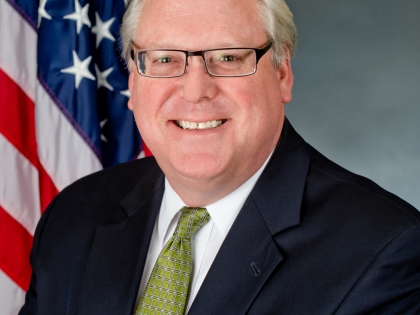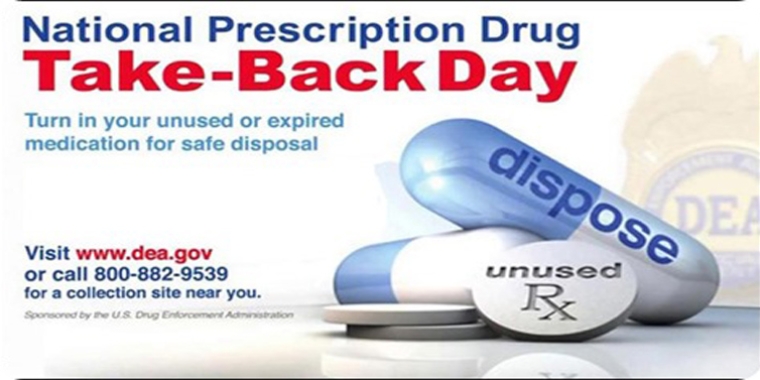
Saturday's 'National Prescription Drug Take Back Day' important to ongoing fight against abuse, addiction: Senator O’Mara sponsored new law in 2018 to expand year-round drug take back efforts in NYS
October 25, 2018
-
ISSUE:
- Prescription drug disposal

Elmira, N.Y., October 25—State Senator Tom O’Mara (R,C,I-Big Flats), a member of the Senate Task Force on Heroin and Opioid Addiction, reminded area residents today that Saturday, October 27, 2018 is National Prescription Drug Take Back Day. Law enforcement agencies across the Southern Tier and Finger Lakes regions will operate drop-off centers to allow for the safe and responsible disposal of unused prescription drugs.
“It’s incredibly important that our local law enforcement leaders continue to participate in National Prescription Drug Take Back Day. Their ongoing leadership in this overall effort to combat prescription drug abuse makes all the difference,” said O’Mara, noting that the federal Drug Enforcement Administration (DEA) in partnership with local police agencies coordinates the annual event across the nation.
On Saturday law enforcement agencies throughout the Southern Tier and Finger Lakes regions have established drop-off centers to allow people to anonymously dispose of unwanted prescription drugs between 10:00 a.m. and 2:00 p.m. O’Mara said that a full listing of local collection sites being offered throughout his legislative district covering Chemung, Schuyler, Steuben, Tompkins and Yates counties can be found on the DEA website, https://takebackday.dea.gov/?src=dea.gov.
In July, Governor Andrew Cuomo signed into law legislation O’Mara sponsored this year to expand the availability of year-round drug take back efforts in New York State. The “Drug Take Back Act” (S9100/A9576, Chapter 120 of the Laws of 2018) O’Mara sponsored will establish an industry-funded, statewide pharmaceutical drug take-back program. It advances a “product stewardship” approach to the challenge of disposing of unwanted medications. Pharmaceutical manufacturers will be responsible for all of the costs of the initiative including public education and awareness, as well as the collection, transport and proper disposal of unwanted drugs. The Act further requires chain pharmacies and mail-order pharmacies to provide consumers with on-site collection, prepaid mail-back envelopes, or other federally approved methods to encourage safe drug disposal.
O’Mara noted that while law enforcement agencies have drop-off points and collection boxes – and other government agencies conduct drug take-back days to help properly and safely dispose of many drugs – additional efforts are needed. Other state-level initiatives to expand the number of permanent collection sites in communities are conducted on a voluntary basis, are limited in scope, and participation remains low. “Product stewardship” is the concept that the manufacturers, producers, or sellers of a product should take responsibility for minimizing the product's environmental impact throughout all stages of its life cycle, including disposal, recycling, or destruction.
The Drug Take Back Act creates a unified, statewide drug take-back program that would save government and taxpayer dollars, and reduce medication misuse. Additionally, the program will help protect New York State’s waterways by preventing drugs from being improperly disposed of by flushing or other means that contaminate water bodies and negatively affect aquatic life. Last year, New York made a historic investment in improving and protecting state waterways. Keeping drugs out of water supplies is another important and necessary step.
O’Mara, Chair of the Senate Environmental Conservation Committee, said, "It's incredibly important to do anything and everything we can to complement and support the efforts of local law enforcement and other community leaders to combat prescription drug abuse. These efforts include National Prescription Drug Take-Back Days and other initiatives like this one to facilitate the collection, and safe and responsible disposal of unused medications. This new law will greatly expand the number of permanent, locally based drop-off locations and be a very positive, cost-effective addition to the state's ongoing, overall strategy to protect our communities and local environments."
The federal Centers for Disease Control has identified the abuse of prescription medicine as one of the nation’s fastest-growing drug problems with nearly 15,000 people dying every year of overdoses due to prescription painkillers. In 2010, 1 in 20 people in the United States over the age of 11 reported using prescription painkillers for nonmedical reasons in the past year. Moreover, an estimated 70 percent of people who abuse prescription painkillers obtained them from friends or relatives who originally received the medication from a prescription. The problem is of particular concern with respect to young adults and teens.
-30-



